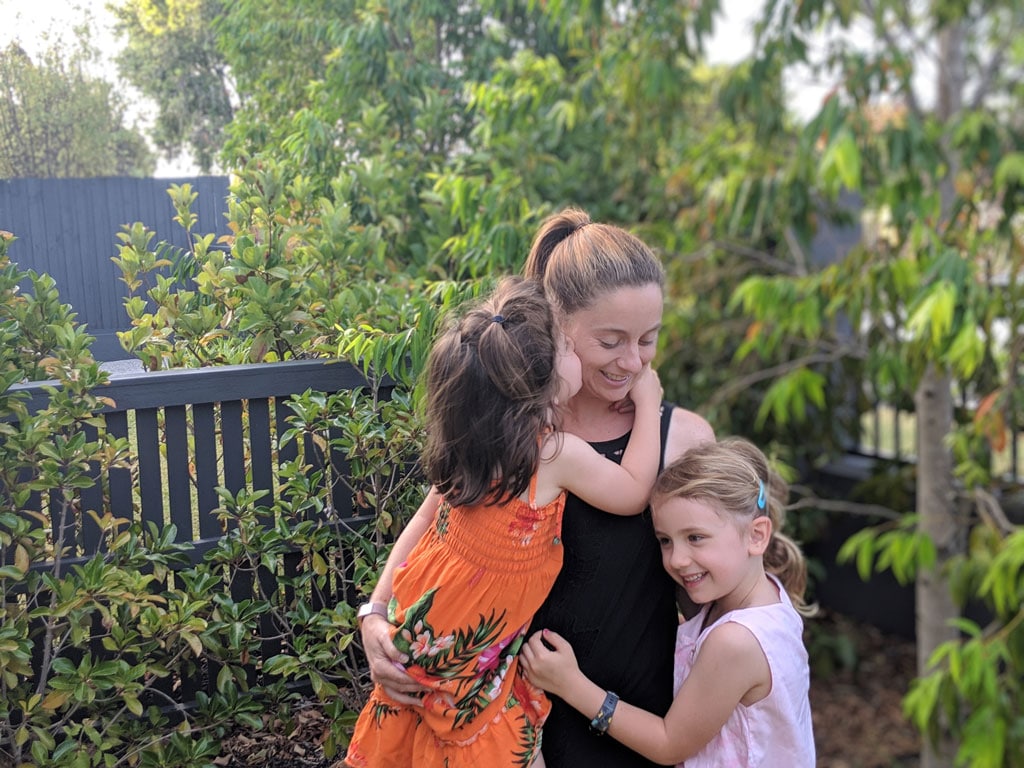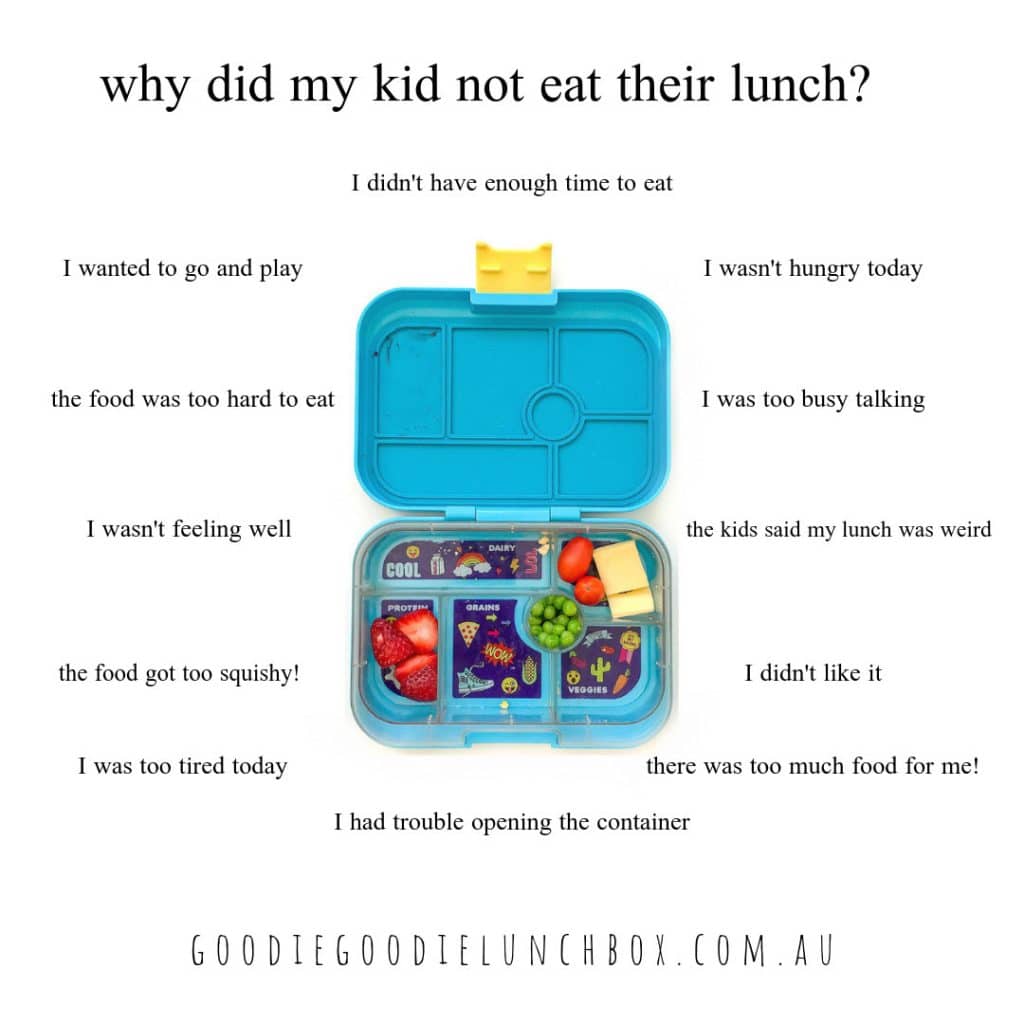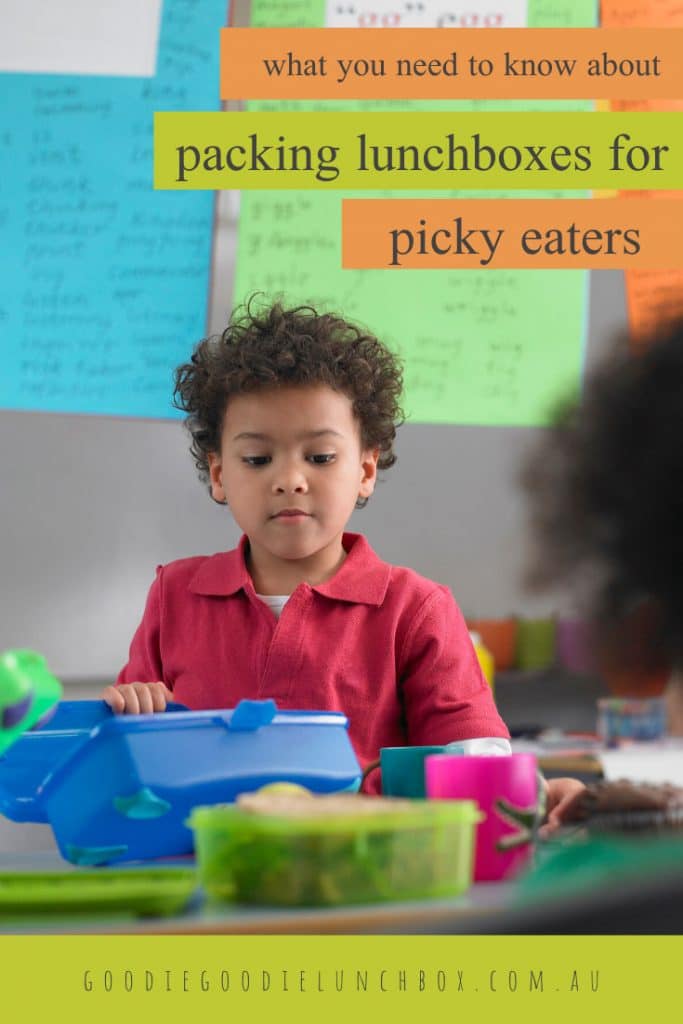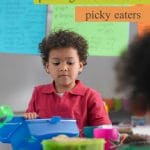Have a picky eater on your hands? In this interview with mealtime cheerleader Simone Emery of Play with Food we talk packing lunchboxes for picky eaters. Simone is a children’s nutritionist and Mum of two who loves assisting families of fussy eaters in a friendly and actionable way.
Firstly, thanks so much for speaking with me! Can you tell us a little about yourself and what attracted you to the field of nutrition and especially working with picky eaters?
I am a Melbourne-based mother of two and a children’s nutritionist specifically working with families with fussy eaters. Family nutrition is such a fascinating combination of relationships, belief systems, food acceptance, skills, incidental bumps along the way and of course a little bit about the food too. Population based messaging is very different to the act of providing food every day. Picky eating is grossly misunderstood, and I love working with people that have not been represented or understood well in the past.

Even though you are an experienced children’s nutritionist, have you had issues with your own kids and picky eating? How do you approach this?
I think my blessing as a parent has been to really understand the research. I am a data nerd! I knew that we would have our own bumps in the road with some sensory processing and tongue tie issues. Yet, by following best practices we have pretty stress free meals and my kids are tolerant of my not-really-chef-like cooking. They aren’t the most adventurous eaters. Yet my aim is not to raise children that devour everything in sight, my aim is to raise curious children that love their bodies.
“my aim is not to raise children that devour everything in sight, my aim is to raise curious children that love their bodies”
Before we start talking specifically about packing lunchboxes for picky eaters we need to understand, when is picky eating just a phase and how do we know we need to get more help?
There are known red flags that distinguish between picky eating and problematic feeding. This includes not meeting feeding milestones like transitioning to a cup by 16 months or not moving off smooth purees by 10 months, stress/anxiety at mealtimes, refusal of whole food groups and having under 20 foods total in a child’s diet. Developmentally related fussiness (shown to pop up generally at about 18 months and then again at 5) should ease within about 6 months. Chatting to a professional is a wonderful way to get specific advice about your situation. Not all fussy eating is the same.
What about extreme picky/fussy eaters? What is the best way to help our kids?
Generally, the first stop should be the GP. Go with information relating to why you have concerns and why they are considered red flags for feeding. On top of this, source credible support for yourself and your family. Make sure you have your wider support network on the same page as you when it comes to feeding kids. Myths like “They will grow out of it” and “You are spoiling her” are very detrimental for relationships.
Extreme picky eating is exacerbated by pressure and it triggers the child into flight or fight mode. This ruins their relationship with understanding full and hunger cues. So, when you have an extreme picky eater, it’s important to understand what sensory triggers, skill deficits, coping strategies your child is using and then WHY they are using them. With that, you may also require meal planning support, changes in how foods are served and new strategies to employ at home to support your child’s needs. Extreme picky eating is not a behavior. It comes about due to sensory, anxiety and skill concerns overriding nutritional requirements.
“Extreme picky eating is not a behavior. It comes about due to sensory, anxiety and skill concerns overriding nutritional requirements.”
Why is food exposure (offering new foods on a consistent basis) important and how do you recommend we do this?
If you want to make friends with a new food, you need a gentle introduction. You need exposure in a way that your child deems as safe. For some kids, they may tolerate the food being in the middle of the table as the first exposure. And modelling eating it near them would also be a great way for them to tolerate that food.
The best way to feed children is to offer the foods in the middle of the table so they can select their foods. Coach and provide them with strategies to opt out if they do take the food and change their mind, like a learning bowl. Learning to make friends with the food may need a while to get familiar with it.
We boost familiarity by seeing it get prepared, by seeing it in the middle of the table, by seeing others select it for their plates, by smelling it, by touching it, by listening to others break it / eat it. Our senses are very important in making the judgement call about eating a food. So, being allowed the freedom to learn is important. Not everything gets eaten at the first introduction. It can take some foods hundreds! So, pressure free offering of foods to meet is the best way to let a child explore them.
“Not everything gets eaten at the first introduction. It can take some foods hundreds! So, pressure free offering of foods to meet is the best way to let a child explore them”
OK, let’s talk packing lunchboxes for picky eaters. From your perspective, how should I approach packing school lunches?
For the lunchbox, you need to remember a few things.
- Presentation – what does that lunch look like at 1pm? What would make that food desirable to eat? I have learnt, the more familiar the food looks, the better.
- Time – children are limited by how much time they have available to eat. So, making it as easy to eat as possible is important. This means think about size of food, ergonomics of the containers, reducing how much new sensory input is coming at them to process – like smell, sights and textures.
- Food Safety – make sure the food is cool if it needs to be cool. Hot if it needs to be hot. At risk foods in the lunchbox (like meats, yoghurts etc) should not be between 5oC and 65oC for longer than four hours.
So, overall it is best to keep the food presentable, familiar-enough (depending on how challenging your child finds new foods) and easy to eat quickly. If you want to expand on lunchbox repertoire, breakfast, afternoon tea, dinner and weekends are fantastic to work on food chaining and skills to cope with new foods.
What are your top items you love to pack for your kids in their lunchboxes?
- Sandwiches
- Cucumber
- Cherry Tomatoes
- Grapes
- Nectarines
- Mango
- Leftover Pumpkin Soup
- Leftover Fried Rice
- Pretzels
- Strawberries
Do your kids always eat their school lunches?
No. And that’s totally OK. They choose what they want to eat from what I provide in there. My youngest is especially vocal if someone questions her about her lunch. I’ve heard her tell other kids “No, my mum says I eat what I want, in any order I want, to make my belly full.”
Do you pack a lunchbox for yourself and what do you love to pack?
I work at home or am out doing home visits with fussy eaters, so, I don’t generally pack a lunch. I live on leftovers though!
These are just for a bit of fun…what are you:
Reading: Thinsanity by Glenn Mackintosh
Listening to: Oprah’s Super Soul Conversations Podcast
Drinking: Herbal Tea
Eating: Coconut Yoghurt and Granola (Morning Tea)
Dreaming of: Being able to book a holiday
What are your special skills and if you could have a super power what would it be?
I think my superpower is putting myself in a child’s mealtime seat. I can totally understand why cooked carrot is harder than raw carrot to learn about! I love to play with food with kids and pick-up on all their non-verbal cues about what is really going on for them.
A big THANK YOU to the amazing Simone for this helpful information and talking packing lunchboxes for picky eaters with me today. You can find Simone at Play With Food on Instagram or Facebook so be sure to go and check her out!
For more resources you may be interested in learning about the best food for kids teeth in the lunchbox an interview with Dr Samantha Byrne, former dentist and lecturer in Oral Microbiology at The Melbourne University.
Happy reading,
Bernadette





